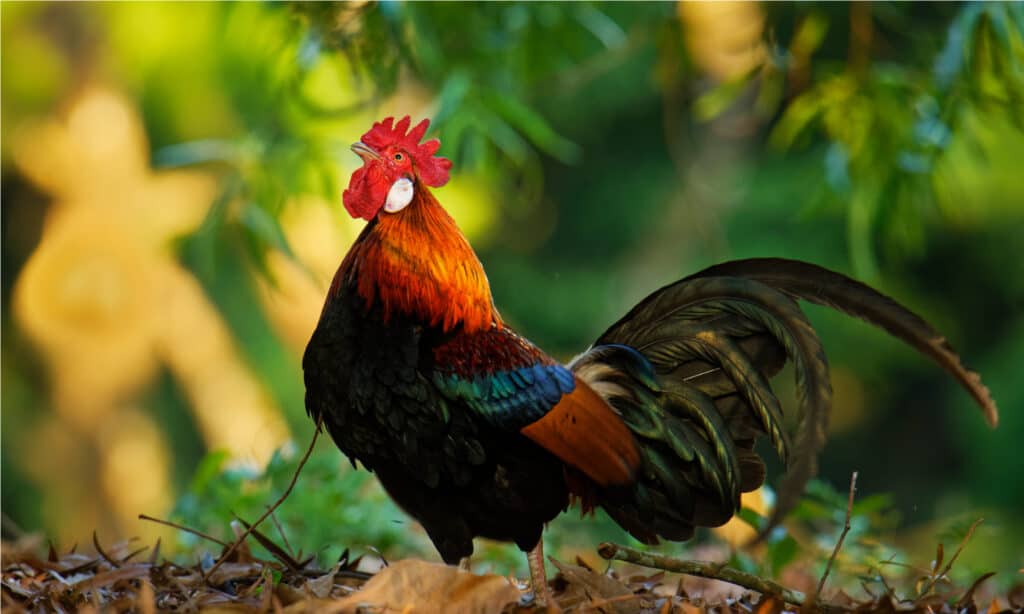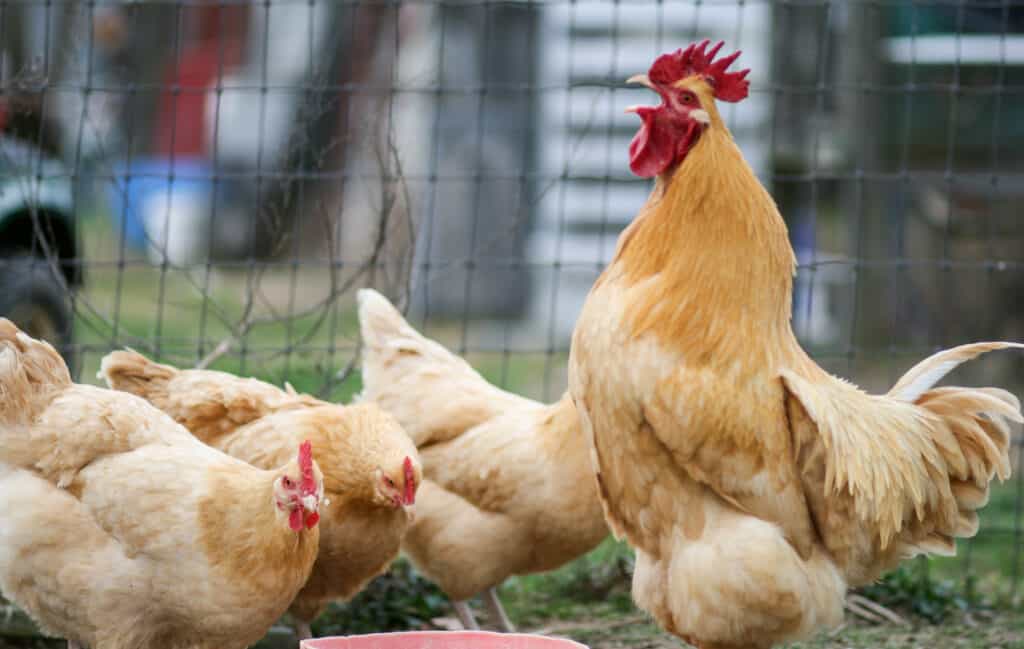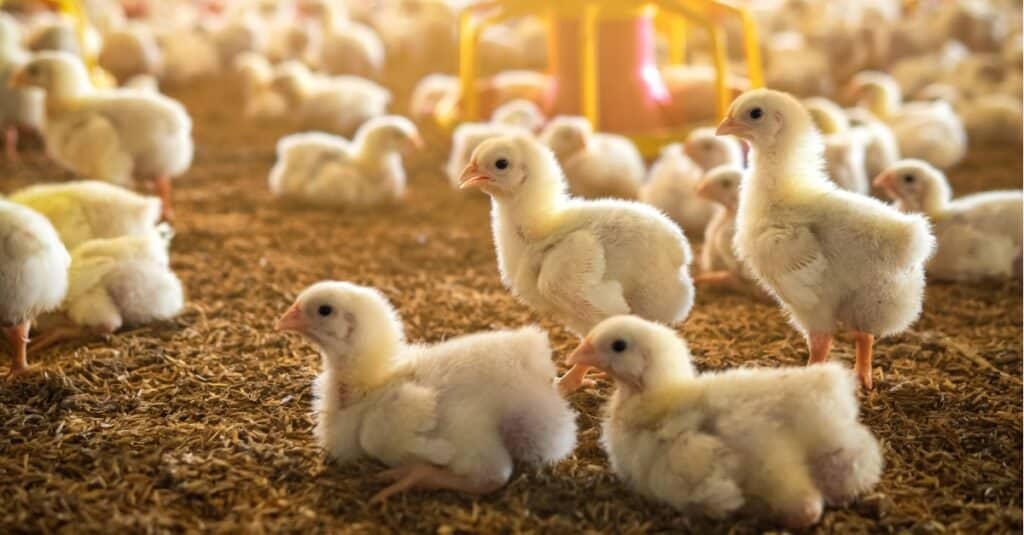Chickens are popular birds, and they are the most domesticated fowls on the planet. Man uses them for several purposes, including as a source of multiple kinds of foods and as pets. Even though, on a general note, all chickens are used for the same purposes and act the same way, there are still differences between a male (rooster) and a female chicken (a hen), apart from their sexual organs. We discuss these differences in detail below.
Comparing a Male Chicken and a Female Chicken

| Male Chicken | Female Chicken | |
|---|---|---|
| Egg Laying | Cannot lay eggs | Can lay eggs |
| Feathers | Long and pointy feathers | Short and rounder feather |
| Leg | Thick legs and spurs | Thin legs and no spurs |
| Wattles and Combs | Longer wattles and pronounced comb | Shorter wattles and less pronounced combs than males |
| Roles | Protection of flock | Laying eggs and raising young ones |
The Key Differences Between a Male Chicken vs a Female Chicken
The key differences between a male chicken and a female chicken are feathers, legs, wattles and combs, roles, and behavior.
Let’s explore these differences in detail!
Male vs Female Chicken: Feathers

Male chickens always have longer, pointier, and sometimes more colorful tail feathers than female chickens.
©Martin Pelanek/Shutterstock.com
Both male and female chickens have feathers. However, there are subtle differences in their feathers that can tell you whether you have a male or a female. For instance, male chickens always have longer, pointier, and even sometimes more colorful tail feathers than female chickens. Also, the neck feathers (referred to as hackles) of female chickens are shorter and rounder than those of males. Lastly, male chickens have long and pointed saddle feathers that become obvious about three months in. On the other hand, female chickens have rounded saddle feathers.
Male vs Female Chicken: Leg
Another physical characteristic that differentiates both sexes of chickens from each other is their leg. Generally, female chickens have thinner legs than male chickens. Furthermore, in some breeds, male chickens grow spurs on their legs that help them defend themselves. These spurs are grown above their toes, and if you own a male chicken with spurs, you could remove it.
Male vs Female Chicken: Wattles and Combs

Male chickens have longer wattles and more pronounced combs than female chickens.
©Racheal Carpenter/Shutterstock.com
In case you don’t know what the wattle is, it is that fleshy skin you see under a chicken’s beak. Generally, male chickens have longer wattles than females. Also, when it comes to combs, the male chicken generally has a brighter and more pronounced comb than the female. The comb is the red crest on top of a chicken’s head. It is usually made of flesh.
Male vs Female Chicken: Roles
Beyond their physical appearances, there are also some social differences between a male and a female chicken. A prominent one is in their roles within a flock. It is the duty of male chickens to defend the flock from aggression, while the female chickens have the task of laying eggs, hatching them, and raising their baby chickens. Both of them carry out their roles to the letter, with the males ready to do territorial violence to protect the flock.
Male vs Female Chicken: Behavior
Another social difference between both sexes is in their personalities. Female chickens generally tend to be timid and friendly, while male chickens are more assertive, aggressive, and bossy, even when they are young. This is why you see male chickens begin to engage in battles as they grow older.
Also, the male chicken is more territorial and observant than the female chicken, which makes sense because they are usually called upon to defend eggs and the flock. It is important to note, however, that when it comes to their children, female chickens can be incredibly territorial too.
Lastly, male chickens have more strength and endurance than their female counterparts, and they also tend to be noisier than the females as well.
Despite all the above, it should be noted that personality types are not absolute rules. Individual chickens could vary in personality from time to time.
Can You Distinguish Between the Male and Female Chicken at Birth?

Some common methods have proven to be very useful in telling the sex of a chicken once it hatches.
©iStock.com/Polawat Klinkulabhirun
It can be incredibly difficult to tell the sex of newly hatched chicks, and the fact is that until they mature, none of the methods used to tell the differences between these chicks can be 100% trusted. However, some common methods have proven to be very useful in telling the sex of a chicken once it hatches. Some of these methods include:
1. Feather Sexing
In some chicken breeds, male chickens are not born with wing feathers, whereas the females are. Therefore, within the first few days of hatching, you may be able to tell the absence of wing feathers and the sex of the birds accordingly. This method is especially accurate if the parents are sexed properly. It is important that if you use this method, you should handle the wings of the chicks carefully when checking. It is not a 100% foolproof way of sexing chickens, but it is one of the safest and most comfortable ways, especially when compared to the vent method.
2. Vent Method
This is usually done as a last resort, but it is a very accurate way of determining the sex of baby chickens. The first thing you should know about this method is that it can be harmful to chicks, and it is best handled by a professional.
Vent sexing involves checking the reproductive organs of a chick. The process involves carefully holding the chick upside down and squeezing its body into emptying itself of feces. Afterward, the vent area is turned outward by applying light pressure to the chick’s cloaca. A trained chicken sexer will be able to tell if a chick has a slight bump that signals it is a male.
Indeed this method is far more accurate than others (though not foolproof), but it takes years to practice and master, and there is also the fact that the chicks could accidentally be harmed in the process. This is why it is usually a last resort.
The photo featured at the top of this post is © iStock.com/OlgaVolodina
Thank you for reading! Have some feedback for us? Contact the AZ Animals editorial team.






